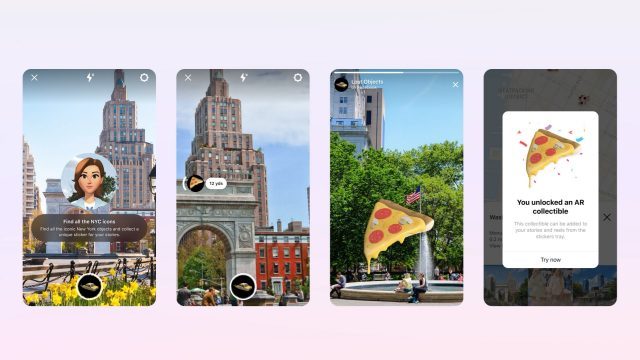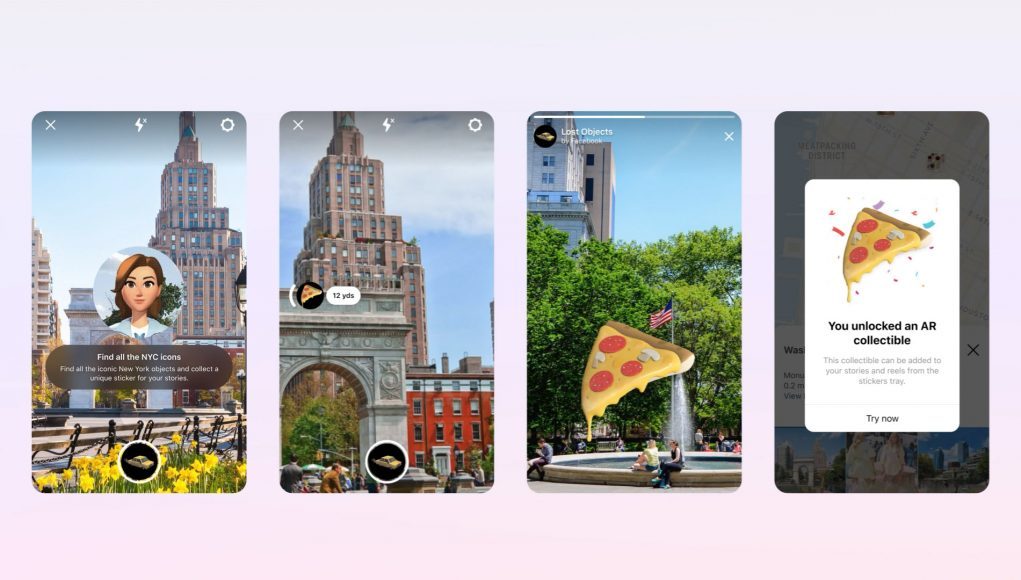Today Facebook announced that it plans to expand the capabilities of its Spark AR platform to give developers more tools to build experiences that leverage existing smartphone-based AR and the company’s upcoming AR glasses.
Facebook has made no secret that its Ray-Ban Stories camera glasses are just its first step toward building full blown AR glasses. But just as the hardware continues to be refined, the software must evolve too.
Facebook’s Spark AR Studio toolset was initially built largely around AR face filters but has been steadily expanding with more features. The latest updates improve the platform’s understanding of things beyond the user’s face, like their entire body and the world around them. The company says it’s “working toward fully-featured AR glasses” and hopes the new capabilities of Spark AR will “illuminate the path to AR glasses.”
The updated toolset will soon support geo-mapped experiences for public spaces which will allow for location-based AR experiences that will be accessible from specific locations. This could enable experiences like a scavenger hunt, guided tour around a city, or even a murder mystery where you have to go find clues in the real world.

Facebook says it’s testing this geo-locked AR capability with select partners, but will open it up to everyone in 2022.
Beyond geo-awareness, the company says it’s adding body and hand-tracking to Spark AR Studio which will allow developers to easily anchor AR effects to a person’s body. The capability will support “20 different 2D key points” which can be applied to a single person or multiple people.
Hands can be tracked specifically as well, and Facebook says a hand bounding-box will be the first function of a “multi-phased capability rollout” which will ostensibly add additional hand-tracking features (like, perhaps, finger-tracking) in the future.
Facebook says that body and hand-tracking in Spark AR Studio will be available “soon.”
The company is also building out what it calls a “virtual objects pipeline” for AR, which will make it easy to place virtual 3D objects in the scene which can include text, characters, GIFs, stickers, and more, all of which will support an understanding of depth, occlusion, and plane tracking to convincingly existing in the space. This developer feature will come in 2022, according to Facebook.







